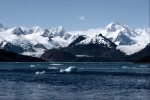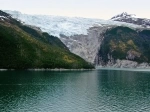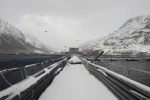Alberto de Agostini National Park. Punta Arenas - CHILE
With an area of 1.460.000 hectares, Alberto De Agostini National Park is the third largest protected area in Chile. It is located 80 nautical miles southwest of Punta Arenas, on land formerly belonging to the forest reserve and national park Netherlands Ferdinand Magellan. The reserve proudly carries the name of the Father Alberto de Agostini, which contributed to the knowledge of the region through its maps and photographs.
This beautiful protected area with fjords and glaciers includes Darwin Range and the famous and disputed Beagle Channel. Navigating the channel referred to the incredible glaciers coming down the rocky slopes towards the fjords, sinuses and canals. One of the best known is the Marinelli Glacier, the largest in the entire area, with enormous ice walls and entrances. Another very visited the glacier De Agostini, which is protected by two mountain barriers and whose accessibility can be landed on the ice.
In turn, the journey through the narrow channel leading to the bay Murray Wulaia, where he is a true cultural landmark: in that place the biologist Darwin met the original inhabitants of Tierra del Fuego, an encounter which influenced his later theories on human evolution. This area of wild beauty concentrated the biggest settlement of the Yagan (yámanas or yahganes) in the region, aided by the wealth of resources that provided its marine environment.
Another attraction of the park is Pampa Guanaco, which is often visited by herds of llamas and also provides a good place for fishing enthusiasts.
The park has an interesting fauna can be observed as the colonies of seals and sea elephants and sea otters, called by locals "otters", among other species. Also, its lush vegetation is composed of a diversity of species which are highlighted and cinnamon coigües growing on steep cliffs.





